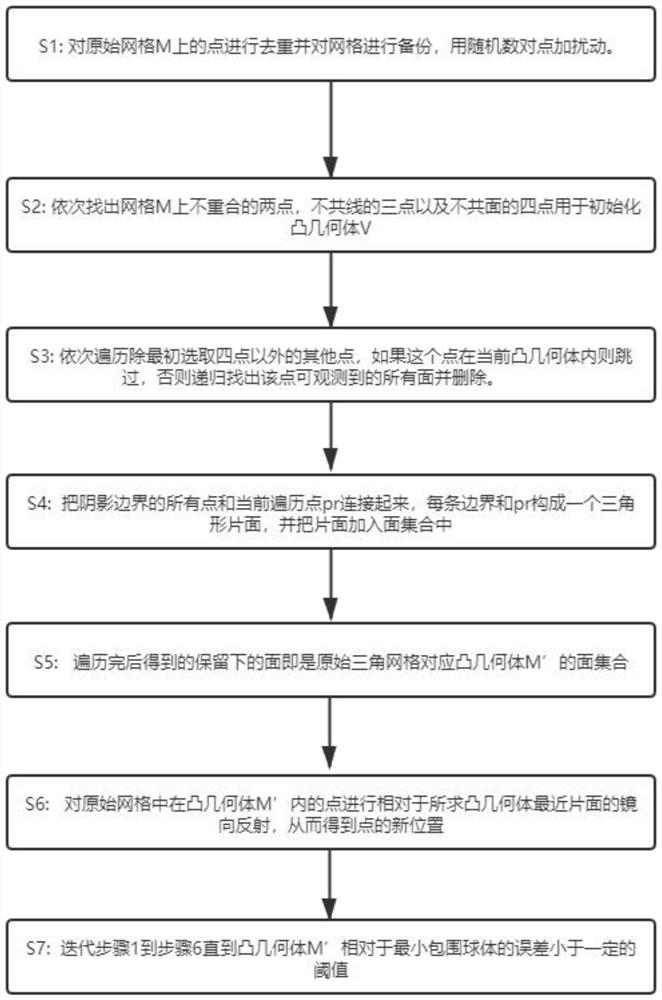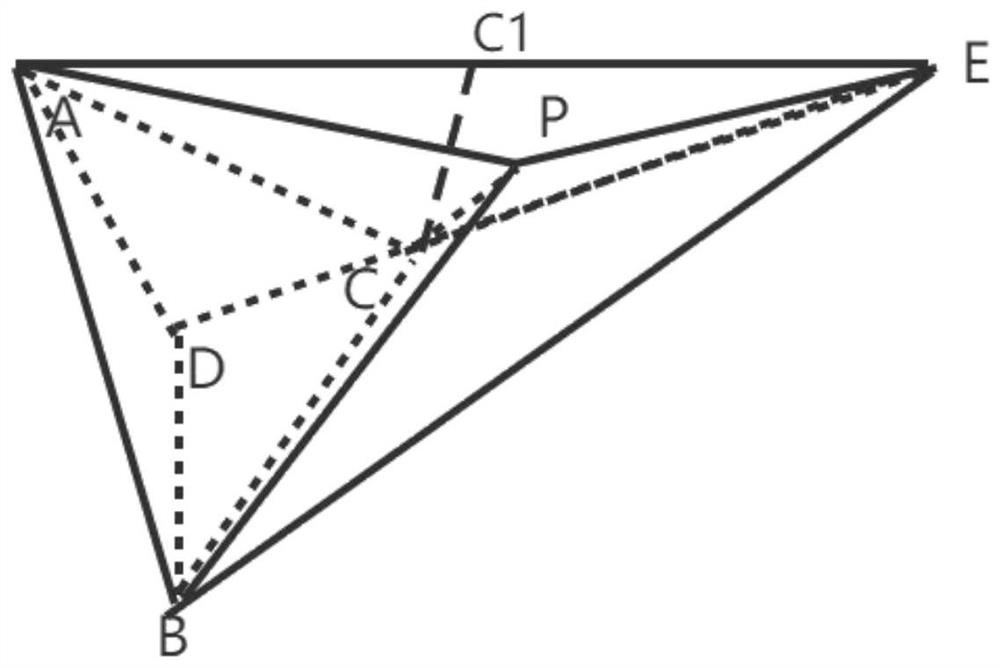3D model spherical surface area-preserving parameterization method and system based on mirror reflection
A parametric and mirroring technology, applied in the field of digital 3D geometric models, can solve problems such as parametric deformation, solution, time overhead, etc. that are not theoretically considered
- Summary
- Abstract
- Description
- Claims
- Application Information
AI Technical Summary
Problems solved by technology
Method used
Image
Examples
Embodiment Construction
[0046] The technical solution of the present invention will be specifically described below with reference to the accompanying drawings and examples.
[0047] The present invention aims to solve the surface parameterization in most cases, and there is a problem that the conventional spherical parameterization method is required, and there is no theoretical support or needs to solve the problem of complex nonlinear equations. . The experimental results show that the method can efficiently and accurately enclose a wide variety of zero-definition-enclosed mesh to protect the area to the spherical surface of the topology, which is widely used in the consistent mesh generation. Digital geometric processing such as texture mapping.
[0048] The invention has a mathematical theory basis, and ensuring parameterization is an area of protection, that is, the area of each grid is constant during each iteration, and there is no need to relate complex nonlinear equations during the iterati...
PUM
 Login to View More
Login to View More Abstract
Description
Claims
Application Information
 Login to View More
Login to View More - R&D
- Intellectual Property
- Life Sciences
- Materials
- Tech Scout
- Unparalleled Data Quality
- Higher Quality Content
- 60% Fewer Hallucinations
Browse by: Latest US Patents, China's latest patents, Technical Efficacy Thesaurus, Application Domain, Technology Topic, Popular Technical Reports.
© 2025 PatSnap. All rights reserved.Legal|Privacy policy|Modern Slavery Act Transparency Statement|Sitemap|About US| Contact US: help@patsnap.com



